#1 Product – Omega 3 Premium
Overall Rating: 98.2%
Product Claims:
Omega 3 Premium is our #1 Top Product for omega 3 supplements. The makers of this product bring you the best out there for supplementing omega 3 fatty acids. Our bodies need essential fatty acids to build healthy cells and for us to have a healthy nervous system. They are also helpful in reducing inflammation in the body and reducing the effects of heart disease. In order for omega 3 fatty acids to benefit our body, it has to be a pure form that has been tested for mercury and PCB’s. Plus, contain enough DHA and EPA to be effective. Omega 3 contains Over 1,500 mg Omega 3’s Per Serving.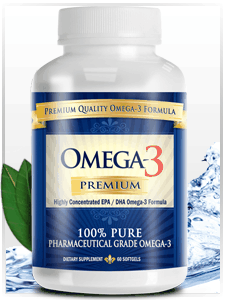
This product stands above the rest because it is made in an FDA Registered laboratory that is GMP-Certified. This means they maintain strict standards for quality and purity. Omega 3 Premium is guaranteed 100% Pure and PCB FREE. The manufacturer also gives you a formula that contains 800mg EPA and 600mg DHA. This supplement Complies with the U. S. Pharmacopeia’s Standards for quality and purity. It is all of this that makes this product #1 above all the rest.
Value:
Omega 3 Premium offers a deal that cannot be beat. This product retails for $49.95 a bottle. The company offers a deal, 6 bottles for $138.00 a bottle, which brings the price down to $23.00 a bottle. This amounts to Buy 3, Get 3 Free. They also offer a 90 Day Money-Back Guarantee.
No questions asked, just return the product and they will give you your money back.
Our Conclusion:
Our editors gave Omega 3 Premium the title of #1 Product based on all the things this company does to bring you the best Omega 3 supplement. Omega 3 Premium clearly stands above the rest and it shows in the customer reviews and the high certifications they receive for their high quality and standards.
#2 Product – Dr. Sears OmegaRx ™
Overall Rating: 80.2%
Product Claims:
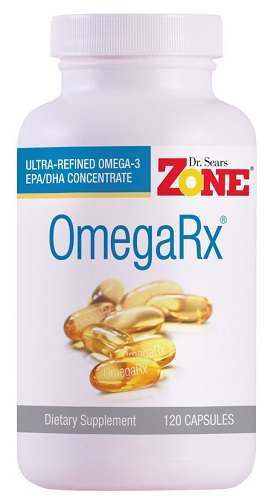 OmegaRx ™ is a good product because it does contain a good amount of DHA and EPA in its formula. While they claim purity and high standards for the product, there were some added ingredients including; water, canola oil, citric acid and other ingredients. We had to give this product our #2 Spot.
OmegaRx ™ is a good product because it does contain a good amount of DHA and EPA in its formula. While they claim purity and high standards for the product, there were some added ingredients including; water, canola oil, citric acid and other ingredients. We had to give this product our #2 Spot.
Omega-3 needs to be combined with Omega-6 in a 3:1 ratio. This means we need to take in more Omega -3 than Omega-6. With the amounts listed on the product labeling, you are getting enough to meet your needs. Our only concern was the added ingredients that could dilute the effectiveness of the product. The #1 Product is 100% Pure, with no added ingredients.
This product landed near the top because Dr. Sears is a trusted source for healthy living, diet and products. However, we noticed the website only contained a paragraph of information on the product. There was also no education included on the website about the importance of Omega-3 and how it works.
This product did receive some positive reviews from consumers that bought it stating it didn’t have any side-effects and helped to lower their cholesterol. Our editor’s only noticed 3 consumer reviews and no others. This left us with the question whether anyone bought the product, or if it was effective and impressive enough for consumers to leave a review.
Value:
Dr. Sears OmegaRx ™ retails for $26.95 a bottle. If you go on the “auto-ship” program, you can get the product for $21.56 a bottle. The serving size is 4 gel caps daily, and the bottle contains 15 servings. This means you would need two bottles a month. Also, our editors feel “auto-ship” programs are risky for consumers. They will continue to send you the product and these programs are hard to cancel.
The company does offer a 30 Day Money-Back guarantee on their products. Just make sure that if you are not satisfied, you remember to cancel any “auto-ship” agreements with the company.
Our Conclusion:
Our editors felt that a product endorsed and made by Dr. Sears was worthy of our #2 Spot. Dr. Sears OmegaRx is a good product with a good amount of both EPA and DHA included. It could have made a higher spot if it did not contain filler ingredients. Also, Dr. Sears promotes health but does not include a lot of education about Omega-3 benefits on the product website.
#3 Product – Purity Products Advanced Omega-3
Overall Rating: 76.1%
Product Claims:
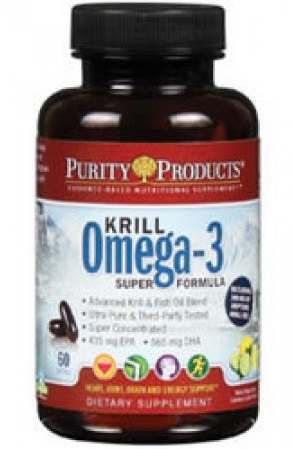 Purity Products Is a good product with a good informative website. While they include good marine based sources of Omega 3 fatty acids, they also include added fillers. We placed this product in the #3 Top Product spot because while they included both EPA and DHA, the dosages are lower than the number one product.
Purity Products Is a good product with a good informative website. While they include good marine based sources of Omega 3 fatty acids, they also include added fillers. We placed this product in the #3 Top Product spot because while they included both EPA and DHA, the dosages are lower than the number one product.
This product contains both EPA and DHA which are important essential fatty acids to help with brain cell formation, heart health, building healthy cells and improving memory. Our number one product contains 800mg EPA and 600mg DHA, while Purity Products Advanced Omega 3 contains 650mg EPA and 500mg DHA. This is lower than our number one product.
Purity Products Advanced Omega 3 is certified by the NSF which is an outside auditor that makes sure a facility meets GMP standards. We could not find a seal on the website that shows this company is GMP Certified. While their products may be quality products and Pure, the number one product shows a certification seal with the GMP.
Value:
Purity Products Advanced Omega 3 retails for $36.65 a bottle. The serving size is 2 soft gels daily and the bottle contains 30 soft gels. Because the dosage for each serving is lower than the number one product, you may need more servings to get the same results as the number one pick.
This product does come with a 60 Day Money Back Guarantee which is always a plus with our editors and shows that a company stands behind their product. We check in on the customer reviews and while they did receive some positive reviews, there were also reviews that the dosage was way less than the consumers physician ordered them to take for their health condition and that the product didn’t seem effective.
Our Conclusion:
Purity Products Advanced Omega 3 is a good product with a reasonable price and a money-back guarantee. This product fell to our #3 Spot because of the low amounts of EPA and DHA. The only certification they have for purity and quality is NSF and the product is made out of the country. Just a little bit higher dosage and we could probably move the product up the list.
#4 Product – Nordic Naturals® Ultimate Omega™
Overall Rating: 73.3%
Product Claims:
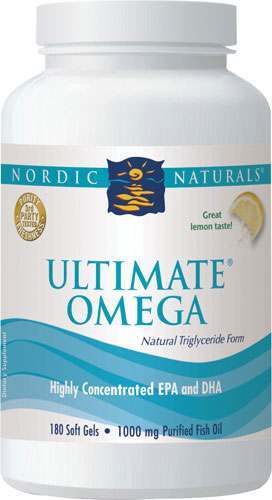 Nordic Naturals ® Ultimate Omega ™ has some good qualities like; a good informative website, good standards for quality and purity and sustainable fishing practices. The reason this product fell to the #4 Spot was the amounts of DHA and EPA are even lower than our number one product and the other products on our review page.
Nordic Naturals ® Ultimate Omega ™ has some good qualities like; a good informative website, good standards for quality and purity and sustainable fishing practices. The reason this product fell to the #4 Spot was the amounts of DHA and EPA are even lower than our number one product and the other products on our review page.
This product includes 650mg of EPA and only 450mg DHA, which is lower than our number one product. The website is very informative and welcoming to consumers. They even include several studies on the benefits of using Omega 3 in general. There are not actual studies or testing results on the effectiveness of the actual product. Our editors would have liked to see that the product is working for consumers to give it a higher ranking.
Nordic Naturals ® Ultimate Omega ™ gives a good testimonial on global responsibility and sustainable fishing practices to protect the North Atlantic Cod. These are good practices, but there was no evidence of any consumer reviews on the website for consumers to see if this product is actually effective.
Value:
This product retails for $27.95 a bottle. The recommended serving size is 2 gel caps daily, and the bottle contains 60 gel caps. While this is a good price, this product has no proof of effectiveness from studies or consumer reviews. Our editors also could not find a money-back guarantee on the product or certification seals. This product is also made outside the United States, so there is no guarantee on quality, freshness or purity.
Our Conclusion:
Nordic Naturals® Ultimate Omega 3 ™ is a good product that pays attention to sustainability and the protection of North Atlantic Cod against overfishing. It took the #4 Spot because the amounts of Omega 3 in the gel caps is considerably lower than our number one product. Our editors could not find evidence of a money-back guarantee or any consumer testimonials.
#5 Product – Nature Made® Fish Oil 1,000 mg
Overall Rating: 65.8%
Product Claims:
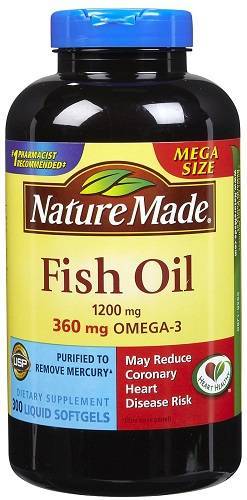 Nature Made® Fish Oil 1,000 mg is actually a quite popular product because it is easy to obtain over-the-counter in most drug stores. While this is a popular product, the amount of Omega 3 is much lower than our #1 Product. The recommended serving size is 3 capsules a day in order to get the 1,000mg of Omega 3, which is more capsules than our number one product.
Nature Made® Fish Oil 1,000 mg is actually a quite popular product because it is easy to obtain over-the-counter in most drug stores. While this is a popular product, the amount of Omega 3 is much lower than our #1 Product. The recommended serving size is 3 capsules a day in order to get the 1,000mg of Omega 3, which is more capsules than our number one product.
This product does have good standards including; U.S. Pharmacopeia certified, Purified to remove mercury, Yeast/Starch/Gluten Free and No preservatives. While these are all good points, our editors noticed the use of soy in the product. This means it is not 100% Pure like our number one product. While soy does have some good health benefits, some people may not tolerate soy.
Nature Made® Fish Oil 1,000 mg contains EPA and DHA 500mg combined and “other Omega 3 fatty acids” 600 mg. The label does not state where the “other fatty acids” actually come from or what type they are. Transparency is important to our editors and our number one product fully discloses the sources of their ingredients.
While this product graces almost every drug store shelf in America, it fell to our #5 Spot because of the low amounts of EPA and DHA. The numbers are far below our top product and the product requires more servings to equal a full daily dose. Also, 1,000mg daily is a commonly recommended amount by doctors, our number one product equals 1,500mg of Omega 3 per serving.
Value:
Nature Made® Fish Oil 1,000mg retails for $10.49 a bottle. This is one of the cheaper Omega 3 supplements and value priced for consumers. It is important to be aware that it takes a lot more of the product to reach the same dosage as our number one product. The consumer reviews only gave it 4 stars for effectiveness. This is probably from the low amounts of EPA and DHA in the product. While you may be saving money, the product may not be effective at all. There are no volume discounts and no return policy. Major drugstores cannot accept opened products back for refunds.
Our Conclusion:
Nature Made® Fish Oil 1,000mg is a popular product seen on many drug store shelves. It may be sold everywhere and have a value price for consumers, but it actually has a very small amount of Omega 3 as compared to our top product. There are not enough positive consumer reviews to prove it is effective and they could move up a bit if they included more Omega 3 in the product.
 Prehistoric man survived on fruits, vegetables, nuts seeds, fish, and no grains. They ate more Omega 3 type foods and little or no Omega 6 foods. From archaeology studies, it is believed they did not have the high occurrence of diseases we suffer from. Scientists also found they had an increase in brain cells and development after they migrated to water and began to eat fish. If you need a clue to improving your health today, migrate to foods and sources of Omega 3 for the answer.
Prehistoric man survived on fruits, vegetables, nuts seeds, fish, and no grains. They ate more Omega 3 type foods and little or no Omega 6 foods. From archaeology studies, it is believed they did not have the high occurrence of diseases we suffer from. Scientists also found they had an increase in brain cells and development after they migrated to water and began to eat fish. If you need a clue to improving your health today, migrate to foods and sources of Omega 3 for the answer. Life today has caused us to eat too many Omega 6 foods and not enough Omega 3. If we don’t get enough Omega 3 and too much Omega 6, the good health effects of Omega 3 are diminished. Supplementation can help increase the levels of Omega 3 if you are unable to eat enough through diet. The recommended daily amount is 600mg a day and up to 3,000mg a day. Never take more than 3,000mg daily without your doctor’s recommendation because of possible side-effects.
Life today has caused us to eat too many Omega 6 foods and not enough Omega 3. If we don’t get enough Omega 3 and too much Omega 6, the good health effects of Omega 3 are diminished. Supplementation can help increase the levels of Omega 3 if you are unable to eat enough through diet. The recommended daily amount is 600mg a day and up to 3,000mg a day. Never take more than 3,000mg daily without your doctor’s recommendation because of possible side-effects. Omega 3 levels are highest in flax seeds and wild-caught salmon. For vegetarians, flax seeds are a good healthy food choice for Omega 3. It can be put into foods, smoothies and baked into muffins. If you choose to eat more salmon, make sure that it lives in cold water, is wild-caught, and not fed grain pellets on a farm. Grain fed salmon is lower in Omega 3.
Omega 3 levels are highest in flax seeds and wild-caught salmon. For vegetarians, flax seeds are a good healthy food choice for Omega 3. It can be put into foods, smoothies and baked into muffins. If you choose to eat more salmon, make sure that it lives in cold water, is wild-caught, and not fed grain pellets on a farm. Grain fed salmon is lower in Omega 3.
 Subscribe Now
Subscribe Now

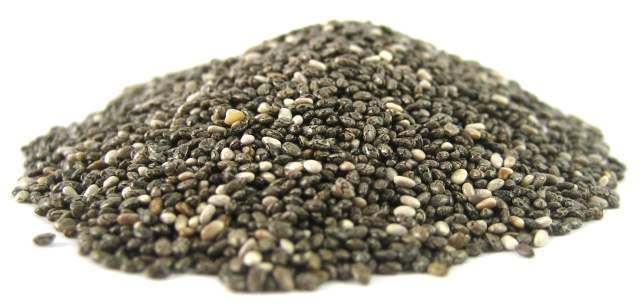 ALA (alpha-linolenic acid) – The highest amounts of this fatty acid come from plants. Flax, chia seeds, kiwi,
ALA (alpha-linolenic acid) – The highest amounts of this fatty acid come from plants. Flax, chia seeds, kiwi,  Auto-immune disorders – Chemicals known as “resolvins” reduce the inflammation of auto-immune disorders. Omega 3 fatty acids help the body increase production of resolvins and lower the inflammation present in these disorders.
Auto-immune disorders – Chemicals known as “resolvins” reduce the inflammation of auto-immune disorders. Omega 3 fatty acids help the body increase production of resolvins and lower the inflammation present in these disorders. You can find the highest amounts of Omega 3 in seafood like, cold water wild salmon and shellfish. Non-meat sources include: flax and flax oil, walnuts, canola oil and soy products. We often do not get enough Omega 3 because our diet in the United States contains very little seafood.
You can find the highest amounts of Omega 3 in seafood like, cold water wild salmon and shellfish. Non-meat sources include: flax and flax oil, walnuts, canola oil and soy products. We often do not get enough Omega 3 because our diet in the United States contains very little seafood.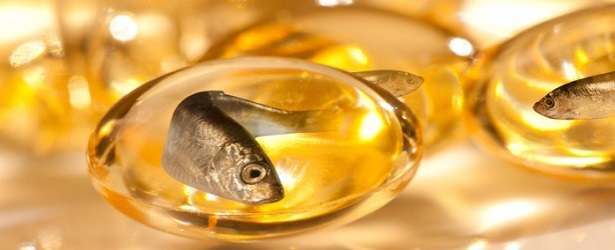
 DHA – DHA develops brain cells and helps with memory, cognition, and mental health. They add it to baby formulas, and pregnant women should take in adequate DHA during pregnancy. The elderly may also get some benefits for dementia and memory loss. Find DHA in: wild salmon,
DHA – DHA develops brain cells and helps with memory, cognition, and mental health. They add it to baby formulas, and pregnant women should take in adequate DHA during pregnancy. The elderly may also get some benefits for dementia and memory loss. Find DHA in: wild salmon,  If we eat too much
If we eat too much 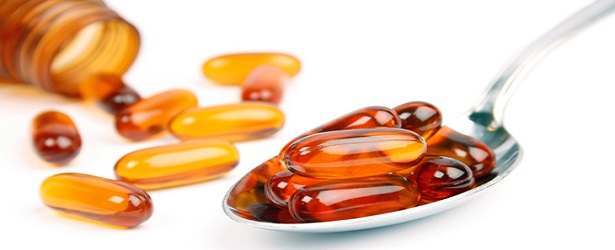
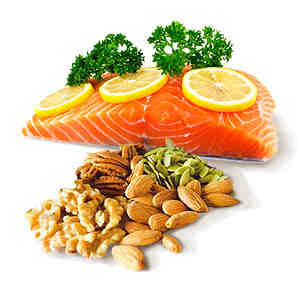 This little talked about nutrient is suddenly becoming very well-known and for good reason. Researchers are finding that Omega 3 fatty acids are very essential to healthy body function, and our society is seriously deficient. Studies show that many health problems are directly attributed to the lack of Omega 3.
This little talked about nutrient is suddenly becoming very well-known and for good reason. Researchers are finding that Omega 3 fatty acids are very essential to healthy body function, and our society is seriously deficient. Studies show that many health problems are directly attributed to the lack of Omega 3.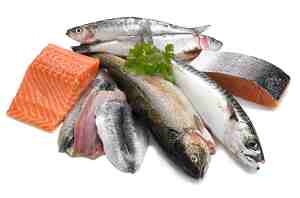 Brain and Memory – Recent research shows that Omega 3 fatty acids have a direct
Brain and Memory – Recent research shows that Omega 3 fatty acids have a direct 
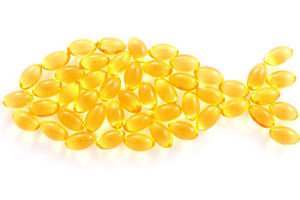 EPA (Eicosapentaenoic Acid) – EPA may reduce the levels of inflammation and
EPA (Eicosapentaenoic Acid) – EPA may reduce the levels of inflammation and  Omega 6 comes from vegetable oil, corn products, and animals fed strictly grain diets. We get Omega 3 from animals fed on grass, cold water wild caught fish, nuts, soy and
Omega 6 comes from vegetable oil, corn products, and animals fed strictly grain diets. We get Omega 3 from animals fed on grass, cold water wild caught fish, nuts, soy and 
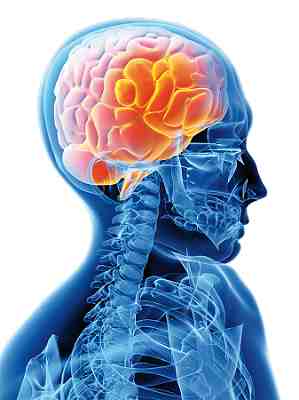 The brain cells are made up of nearly 15 to 20 percent Omega 3/DHA. This important nutrient soaks into the very nerve fibers in every brain cell. It feeds the tiny neurons that actually cause the brain cells to fire and communicate with the rest of the body. First and foremost, this action regulates things like; moods, memory, cognition, and learning. This is why Omega 3 is so important from infancy through adulthood and beyond.
The brain cells are made up of nearly 15 to 20 percent Omega 3/DHA. This important nutrient soaks into the very nerve fibers in every brain cell. It feeds the tiny neurons that actually cause the brain cells to fire and communicate with the rest of the body. First and foremost, this action regulates things like; moods, memory, cognition, and learning. This is why Omega 3 is so important from infancy through adulthood and beyond.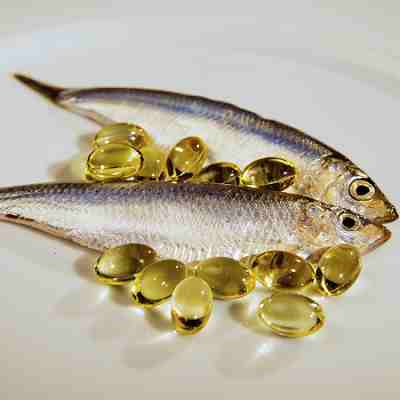 According to World Life Expectancy.com, Monaco in the Mediterranean has an Alzheimer’s and
According to World Life Expectancy.com, Monaco in the Mediterranean has an Alzheimer’s and  Omega 3 and Infants
Omega 3 and Infants
 Diets have largely turned to mostly processed foods and carbohydrates. This in turn robs the nervous system and brain of needed nutrients to function properly. In addition, too many
Diets have largely turned to mostly processed foods and carbohydrates. This in turn robs the nervous system and brain of needed nutrients to function properly. In addition, too many  Inflammation
Inflammation It is recommended to eat at least 2 servings of wild caught cold water fish every week. Fish should be wild caught with the lowest mercury levels possible. Mercury prevents our body from absorbing Omega 3 properly. Eating too much Omega 6 also reduces the proper absorption of Omega 3. If your diet isn’t quite balanced enough, supplements are a good way to get enough Omega 3. If you choose to use an Omega 3 supplement, The American Heart Association recommends taking 1,000mg to 3,000 mg a day. There are some people that must take more than 3,000 mg of Omega 3 daily. Take such an amount only under the advice of a physician.
It is recommended to eat at least 2 servings of wild caught cold water fish every week. Fish should be wild caught with the lowest mercury levels possible. Mercury prevents our body from absorbing Omega 3 properly. Eating too much Omega 6 also reduces the proper absorption of Omega 3. If your diet isn’t quite balanced enough, supplements are a good way to get enough Omega 3. If you choose to use an Omega 3 supplement, The American Heart Association recommends taking 1,000mg to 3,000 mg a day. There are some people that must take more than 3,000 mg of Omega 3 daily. Take such an amount only under the advice of a physician.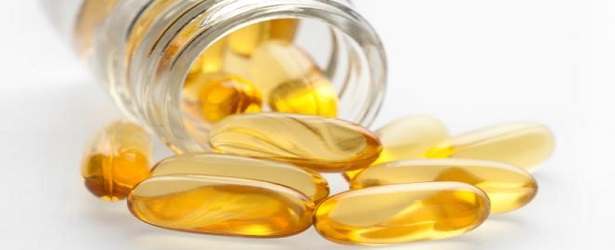

 OmegaRx ™ is a good product because it does contain a good amount of DHA and EPA in its formula. While they claim purity and high standards for the product, there were some added ingredients including; water, canola oil, citric acid and other ingredients. We had to give this product our #2 Spot.
OmegaRx ™ is a good product because it does contain a good amount of DHA and EPA in its formula. While they claim purity and high standards for the product, there were some added ingredients including; water, canola oil, citric acid and other ingredients. We had to give this product our #2 Spot. Purity Products Is a good product with a good informative website. While they include good marine based sources of Omega 3 fatty acids, they also include added fillers. We placed this product in the #3 Top Product spot because while they included both EPA and DHA, the dosages are lower than the number one product.
Purity Products Is a good product with a good informative website. While they include good marine based sources of Omega 3 fatty acids, they also include added fillers. We placed this product in the #3 Top Product spot because while they included both EPA and DHA, the dosages are lower than the number one product. Nordic Naturals ® Ultimate Omega ™ has some good qualities like; a good informative website, good standards for quality and purity and sustainable fishing practices. The reason this product fell to the #4 Spot was the amounts of DHA and EPA are even lower than our number one product and the other products on our review page.
Nordic Naturals ® Ultimate Omega ™ has some good qualities like; a good informative website, good standards for quality and purity and sustainable fishing practices. The reason this product fell to the #4 Spot was the amounts of DHA and EPA are even lower than our number one product and the other products on our review page. Nature Made® Fish Oil 1,000 mg is actually a quite popular product because it is easy to obtain over-the-counter in most drug stores. While this is a popular product, the amount of Omega 3 is much lower than our #1 Product. The recommended serving size is 3 capsules a day in order to get the 1,000mg of Omega 3, which is more capsules than our number one product.
Nature Made® Fish Oil 1,000 mg is actually a quite popular product because it is easy to obtain over-the-counter in most drug stores. While this is a popular product, the amount of Omega 3 is much lower than our #1 Product. The recommended serving size is 3 capsules a day in order to get the 1,000mg of Omega 3, which is more capsules than our number one product.
 The symptoms of ADHD can actually overlap with a number of other conditions. These may not even be noticeable, and needs must be evaluated on behavior scales by a few different observers. Usually teachers, parents, and other caregivers fill out the scale forms and turn them into a Licensed Physician. The symptoms of ADHD can include:
The symptoms of ADHD can actually overlap with a number of other conditions. These may not even be noticeable, and needs must be evaluated on behavior scales by a few different observers. Usually teachers, parents, and other caregivers fill out the scale forms and turn them into a Licensed Physician. The symptoms of ADHD can include: Treatment, whatever type used, is important to reduce the discomfort of sufferers and those around them. It needs to focus on helping them learn to control increased energy levels, reduce movement, and hold conversations with others.
Treatment, whatever type used, is important to reduce the discomfort of sufferers and those around them. It needs to focus on helping them learn to control increased energy levels, reduce movement, and hold conversations with others. Omega 3 – Research has shown that almost half of kids in studies given Omega 3 fatty acid supplementation show reduced symptoms. It is thought that some cases of ADHD are due to a lack of EPA and
Omega 3 – Research has shown that almost half of kids in studies given Omega 3 fatty acid supplementation show reduced symptoms. It is thought that some cases of ADHD are due to a lack of EPA and 
 One very important point we cannot miss is that researchers are finding that Omega 3 Fatty Acids are a basic building block of brain cells. Kids need
One very important point we cannot miss is that researchers are finding that Omega 3 Fatty Acids are a basic building block of brain cells. Kids need  Best fish for kids are ones that swim in cold water and are wild caught. This includes;
Best fish for kids are ones that swim in cold water and are wild caught. This includes; 